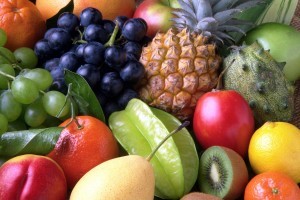Diabetes Friendly Foods!

With Diabetes, one of the most enduring issues is how one can best control their blood sugar and their weight loss. It is no longer just as linear as it once was – it’s not about strict or crash diets, forbidden foods and opting only for sugar free food. According to the American Diabetes Association, the standard nutrition recommendations for people with Diabetes now are to eat well with Diabetes in mind. This means, just eating well while applying the basic principles of healthful eating.
The original trend was to follow a rigid diabetic diet – which means one has to limit the amount of carbohydrates, while eating once in every two hours. People can, now, instead, eat healthily, and manage the content of one’s intake without allowing stress to take over. The Dietary Guidelines for Americans dovetail perfectly with the American Diabetes Association’s nutrition guidelines currently, and it dictates that the norm is now to: shed a few pounds if there is need for it, to get and keep the blood sugar, cholesterol, and blood pressure within the healthy target zones and to retain a state of good health mentally and physically.
Here are five simple tips to follow to do this:
1. Always choose your portions wisely. For lunch and dinner, fill half your plate with vegetables, a quarter with starch or grain, and the remaining quarter with a lean protein source. Include a serving of fruit and low-fat milk or yogurt at the majority of your meals. Choose whole grains instead of refined varieties.

2. Always moderate your portions: Oversized portions tend to lead you to gain excess calories and pounds. Enjoy all that you want, but in moderate portions.

3. Always choose healthy oils and fats: Make sure that you eat less total fat, and more of monounsaturated and polyunsaturated fats. Saturated and transfats are absolutely not allowed. Steer clear of solid fats to ensure that you minimise the extent of saturated fat. Get more is from mono- and polyunsaturated sources by using liquid cooking oils from vegetables, nuts, or seeds. Always cut back on your fat-gram count by trimming down to daily calories.

4. Always opt for Nutritious Carbohydrate Sources: Avoid taking too many calories and empty gains through refined sugars and heavy calorific content. Get your carb grams from nutrition-loaded sources: vegetables, fruits, whole grains, and low-fat dairy foods.

5. Always keep eating out to a minimum: Try cooking at home, and making on-the-run breakfasts, taking brown-bag lunches, or grabbing a healthful frozen entree paired with a salad, fruit, and milk for dinner a few times a week.
References:
http://timesofindia.indiatimes.com/life-style/health-fitness/diet/Handful-of-walnuts-a-day-may-keep-diabetes-away/articleshow/49934943.cms
http://www.diabeticlivingonline.com/food-to-eat/nutrition/5-healthy-eating-tips-diabetes
